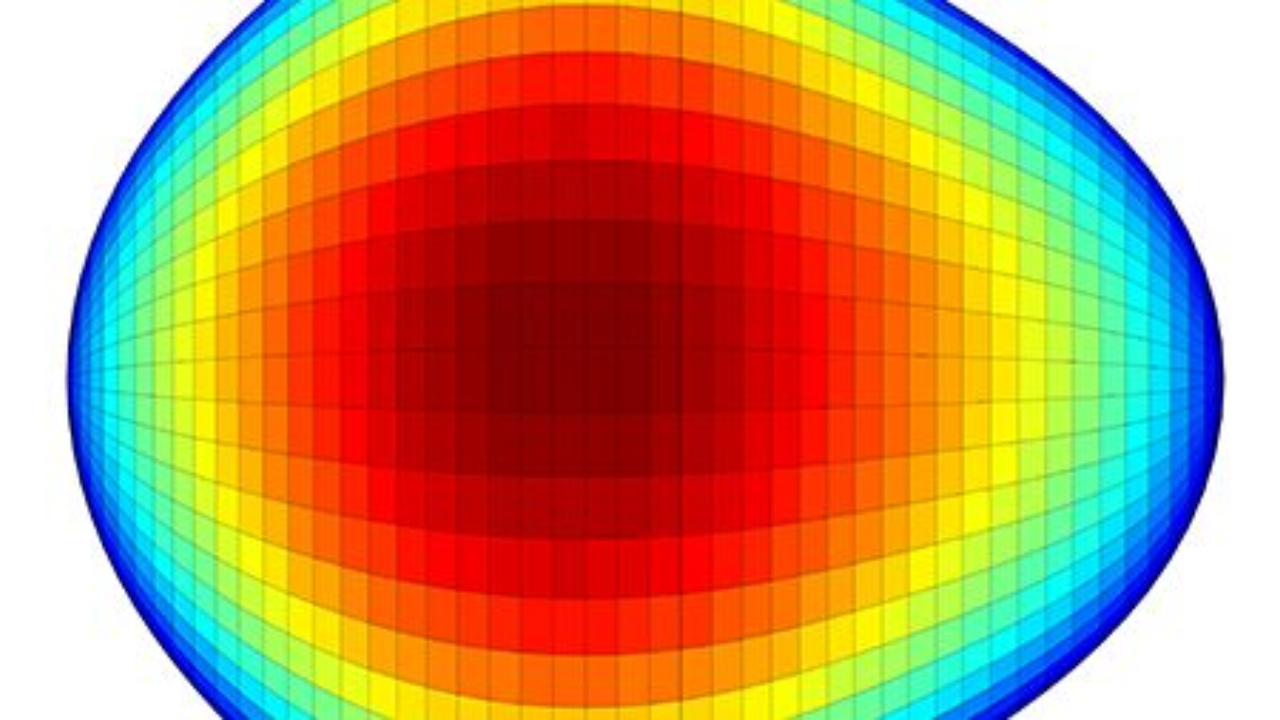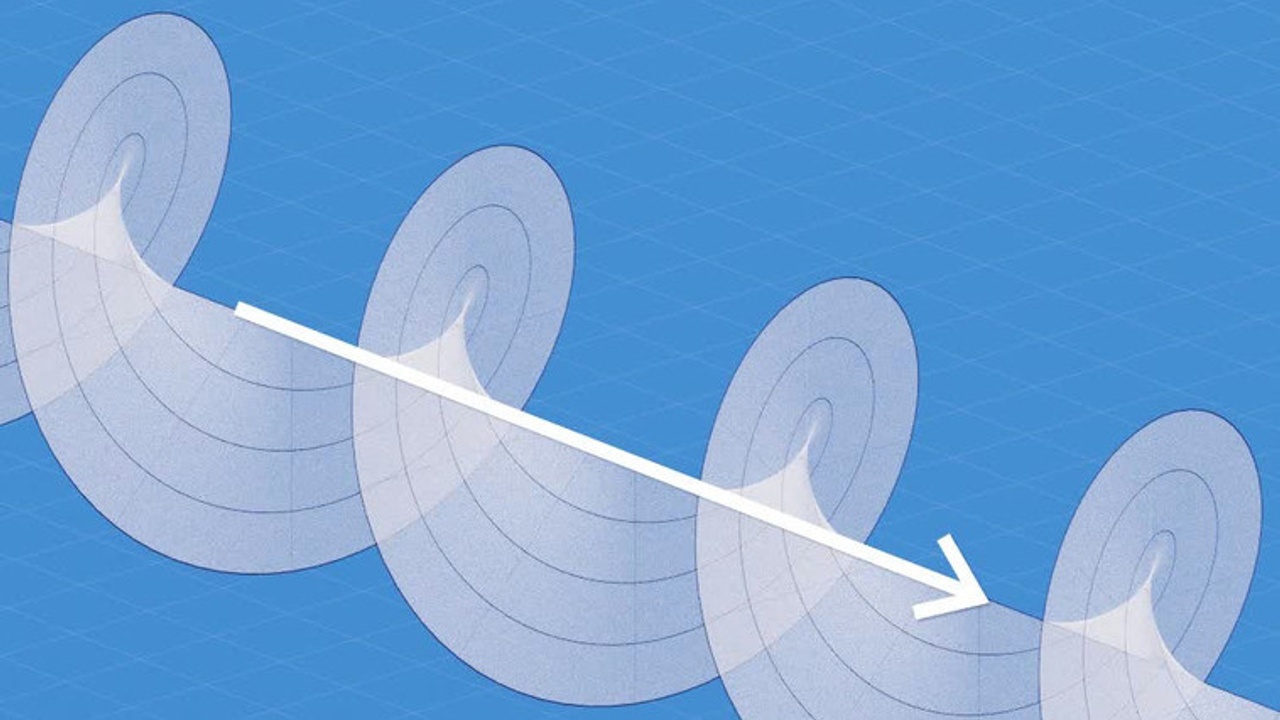Science News
& Faculty Articles
Net Energy “Gain” or Hot Fusion Hype?

The U.S. Department of Energy (DOE), the National Ignition Facility (NIF) at Lawrence Livermore National Laboratory (LLNL), and top science media outlets and journals make highly publicized announcement of “positive net energy gain” from presumed fusion ignition. Yet, when the total energy input of the power supply of the experiment is considered, the fusion reaction was a net energy loss greater than 99%. In other words, for every single unit of fusion energy it produces, NIF burns at minimum 130 units of energy, an efficiency of less than 1%. This is far from any “energy gain”.
By Nassim Haramein, Director of Research Torus Tech R&D Laboratories
With the announcement by the US department of Energy “For First Time, Researchers Produce More Energy from Fusion Than Was Used to Drive It, Promising Further Discovery in Clean Power and Nuclear Weapons Stewardship”, the question has been mooted whether we have just witnessed a scientific and...
New Study Suggests Atomic Nuclei Change Configuration at Varying Energy Levels

Credit: University of Liverpool
By Amal Pushp, Affiliate Physicist at the Resonance Science Foundation
Atomic Nucleus is the central component of atoms comprising of protons and neutrons bound together by the strong nuclear interaction, one of the four fundamental forces and the most powerful of all.
Just like atomic structure, there is a nuclear structure and various models have been propounded in order to approximate the behavior and interactions of atomic nuclei. Some of these models are the liquid drop model, the nuclear shell model, and the collective model proposed by Aage Bohr and co-workers concerning the non-spherical geometry of nuclei.
With reference to the shell model propounded by physicists Goeppert Mayer and Jensen, who won the Nobel prize in 1963 for their work, it says that the atomic nucleus just like the atoms has energy levels that are characterized by the Pauli exclusion principle of quantum mechanics. They found that the main crux...
Empirically Derived Limit on Variations in the Fine-structure Constant

The physical constant alpha (α) has been described as one of the greatest mysteries of physics. Now, new measurements and analysis of spectra from Sun-like stars have produced the most precise astronomical test of alpha and hence potential locational variability in the strength of the electromagnetic interaction with charged particles.
By: William Brown, scientist at the Resonance Science Foundation
How Constant are the Physical Constants of Nature?
Although the forces and physical constants of Nature have been measured and characterized to an astonishing level of precision, some big questions remain: what fundamental aspects of the universe give rise to the laws of Nature? Are the laws set from the beginning by some as-of-yet unidentified intrinsic and indelible relationship or mechanism, producing the seemingly fine-tuned physical parameters that give rise to organized matter and life? Are they immutable in time and space, or do they vary in...
What is the Fine-Structure Constant and How Do Physicists Compute it?

By Amal Pushp, Affiliate Physicist at the Resonance Science Foundation
The fine structure constant, also called the Sommerfeld constant or electromagnetic coupling constant, is one of the fundamental physical constants that characterizes the strength of the electromagnetic interaction between charged atomic particles. The name of this constant was coined by physicist Arnold Sommerfeld who extended Bohr’s atomic model with the motivation of explaining the fine structure lines observed in the hydrogen spectra, which the previous models had failed to explain satisfactorily.
Physical constants are generally of two types: one which has a proper unit associated with them and others that are dimensionless. The fine-structure constant is of the latter type, it is dimensionless and is represented by a number. Various probes have determined this number to be close to about 1/137.
Physicists have estimated that the values of fundamental...
Are Some of the Black Holes Detected, Wormholes Instead?

Image credit: Shutterstock
By Dr. Inés Urdaneta, Physicist at Resonance Science Foundation
Many compact gravitational objects in the cosmos such as black holes, naked singularities, and wormholes, can only be detected by their shadows’ signatures. Distinguishing their different natures through their shadows is a difficult task because many times their shadows are very similar. Therefore, we can’t rely exclusively on this information to discern unambiguously the specific spacetime geometries from the objects.
For instance, the radio images obtained from the Event Horizon Telescope to directly observe the accretion disks of the supermassive black holes in the galactic centers, are hard to interpret since the information about their gravitational field is coupled non-linearly to the magneto-hydrodynamics of the system.
The main feature analyzed in such images, is their intensity profile. An interesting approach to constrain further the space time geometry, is to...
Neutron Helical Waves

CREDIT: SEAN KELLEY/NIST
By Amal Pushp, Affiliate Physicist at the Resonance Science Foundation
Neutrons form a major component of baryonic matter. Except for hydrogen, neutrons are present in the central region (nucleus) of the atoms of all elements. Although they are electrically neutral, they are very crucial for the determination of atomic structure and its composition. One of the key reasons why they are influential is due to the fact that they can penetrate materials that optical radiations like X-rays usually cannot.
The de Broglie hypothesis of quantum theory tells us that elementary particles can possess dual characteristics, wave and particle, depending on the situation. Just like the electrons, the wave characteristics of neutrons can also be employed to study materials and one of the major advantages in this regard is that the wavelength can be turned extremely small which in turn results in a high-resolution image of the sample under study. This...
Topological Complexity of Liquid Water Described in New Colloidal Model

By: William Brown, scientist at the Resonance Science Foundation
Water is one of the most abundant molecules in the universe, and has a simple chemical composition of two atoms of hydrogen and one atom of oxygen. However, this abundant and seemingly simple molecule underlies astonishing properties arising from the peculiar molecular and intermolecular configurations of water. Starting at the molecular configuration where the hydrogen moieties and unbonded electron pairs of the oxygen atom form a tetrahedral molecule: naively, we might assume that the simplest binding arrangement would be a linear molecule, like carbon dioxide (which as a result does not exist as a liquid and goes straight from a solid to a gas via sublimation), however in a water molecule the hydrogen atoms bind to the single oxygen atom with a specific bond angle of 104.5°. This tetrahedral configuration of the water molecule produces a partial electric-dipole, which makes water ionically interactive and...
Cosmic Inflation: Boon or Bane?

Credit: Zosia Rostomian
By Amal Pushp, Affiliate Physicist at the Resonance Science Foundation
Cosmic inflation is a theory governing the dynamics of the early universe, moments after the grand cosmic event called the Big Bang. MIT physicist Alan Guth was the first one to propose the inflationary theory in the early 1980s however, it was later advanced by other influential physicists like Andrei Linde and Paul Steinhardt [1-3]. The theory mainly deals with the exponential expansion of space and subsequently the large-scale structure formation in the universe during its evolutionary stages. It is also suggested by the theory that the epoch of inflation lasted from 10−36 seconds to sometime between 10−33 and 10−32 seconds after the Big Bang. But in order to articulate the events following the Big Bang admirably, one needs to have a full-fledged quantum theory of gravity, which is yet a substantial challenge for physicists.
So far,...
Rhythmic Oscillations and Resonant Information Transfer in Biological Macromolecules

By: William Brown, scientist at the Resonance Science Foundation
This report has been published as a science article review and can be accessed freely at the online journal Qeios- Click here to access the article
In the book Rhythmic Oscillations in Proteins to Human Cognition [1], a compendium of avant-garde researchers takes a fresh look at the mechanics of nature to emphasize the importance of cyclical, harmonic interrelationships of oscillatory phenomena, especially in biophysics and biochemistry. The book is part of a larger series of publications set to explore and document fundamental research carried out globally from astrophysics to particle physics, from stock market to economic theories, and from plant biology to consciousness. The editors Anirban Bandyopadhyay, a senior Scientist at the National Institute for Materials Science (NIMS) in Tsukuba, Japan— whose patents include a time crystal model for building an artificial human brain [2]— and Kanad Ray,...
Ultracold Quantum Vortices are a Proof of Superfluidity

Credit: Ella Maru Studio
By Amal Pushp, Affiliate Physicist at the Resonance Science Foundation
A vortex is a physical phenomenon in fluid dynamics wherein flows in a region of a fluid revolve around a fixed axis. On the macroscopic level, vortices are easily observed as whirlpools, tornadoes, and smoke rings however, they also form on microscopic regimes as quantized objects. In the former case, classical laws completely govern the dynamics of vortices but in the latter, there is a deviation from classical to quantum behaviour since the temperature at which quantum fluids exist is low enough that the laws of quantum mechanics predominate.
Vortices display dynamical motion and such vortices are also characterized by certain physical properties like mass, energy as well linear and angular momentum. Previous work has revealed multiple facets of vortices and their interactions in different physical conditions. Citing a few instances – physicists have...



